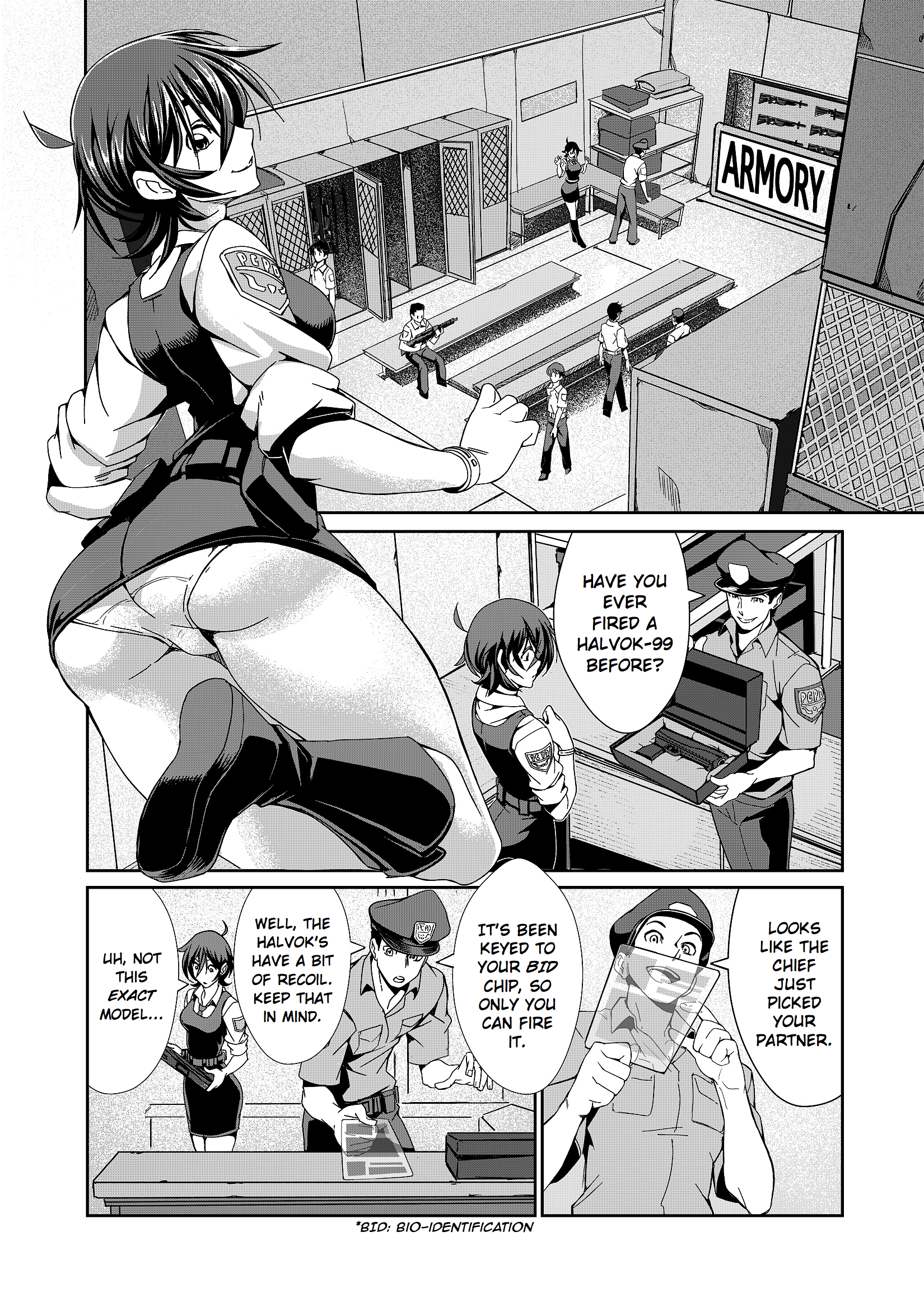Chapter 1, Page 5
PCPD DATABASE ENTRY T-03: BID CHIP TECHNOLOGY
The BID chip is a bio-identification microchip, smaller than a grain of rice, that is implanted under the skin (in the fleshy part of the hand between the thumb and index finger). Around 95% of the population has them and many are implanted at an early age.
Designed to function as a universal identity token, the BID chip serves multiple purposes: it contains an individual’s identification data, medical records, driver’s license, bank account information, and can be used to make financial transactions. With the use of a BID chip, an individual’s unique bio-data may also be “keyed” to log into electronic devices, access smart tech applications, start a vehicle, and even unlock doors.
BID CHIPS AND FIREARMS
The law mandates that weapon manufacturers must make their firearms in accordance with the Telson Act “Smart Gun” provision. As such, every gun is now equipped with a chip that “communicates” a signal solely to its user’s BID chip. Only a registered user can fire their own weapon. Any individual who attempts to use a firearm already registered to someone else will find the weapon “ID-locked” and will be unable to compress the trigger.
The BID chip implementation prevents criminals from getting their hands on a gun, or allowing anyone to steal a police firearm. In the event an individual attempts to commit a crime with a gun, the weapon could be remotely jammed by the central computer at police HQ. Recently, many public locations have designated “Safe Zones” where guns will not fire (except for police-issued weapons). The inclusion of chips makes weapons easier to track as well.
However, due to this “smart gun” technology utilizing the BID chips, most criminals must seek out black-market firearms that have not been upgraded or BID-locked yet. While these older model weapons are becoming increasingly difficult to find, an estimated 2.6 million non-BID integrated firearms still exist. Recent underground crime rings have recently resorted to 3D printed guns (even if they can be unreliable and prone to failure).
Danger Zone One. Story by Midnight. Art by Katsu.




















Hmmm, I’m not quite sure if that uniform is up to code…
anyone with access to a mill, lathe, and metal can make a gun. hell, you can make a zip gun with a piece of water pipe and nail and a bullet. ain’t got a bullet? a piece of lead, charcoal, sulfur, and saltpeter. bam! you got a muzzle loading gun now. gun control advocates have touted the smart gun for years as a way of keeping guns out of the hands of criminals. yes, it would keep an officers gun from being used by another, but stopping firearms proliferation…not a chance.
Not only that, even today in the real world, chips like that can be hacked with a pocket-sized device from a distance up to 20′ or so. It’s basically the same as a ship-reader authorized for retail merchants so that people can pay with credit cards & such, but there’s a thriving black market that criminals can use to hack a person’s card-info & steal from bank accounts.
You can bet your sweet bippy that it wouldn’t take long for an electronics-savvy criminal to whip up a device to specifically read the BID chips in this comic setting & use that data to be able to use a stolen gun.
Yeah, guns are pretty simple devices and the technology in them is very well known and well spread. In the future there is a good chance that metal 3d printing becomes quite easily available to and then pretty soon even rather advanced, reliable gun designs can be manufactured by people who don’t have the knowledge to design them.
The real solution is to figure out how to have less criminals in general, and less violent criminals specifically. But how do we do that? People are different, no matter what rules society set up – even no rules – there will immediately be people who object.
Maybe some research should be made into what, if anything, can be agreed upon by literally everyone on the planet. It would be a good starting point.
That looks an awful lot like the Maxim 9.
Blatant fanservice! … Give me a minute and I’ll say something more about it.
Fan service this early in the comic? Excellent and thank you!
Re; BID chips; The proliferation in implants has led to many criminals carrying machetes and/or hatchets for quick removal of a person’s hand in order to utilize said BID implant …
Oh, and I’m a new reader here (followed your ad from “Delve” comic). 5 pages in and I’m thoroughly enjoying the comic so far – regardless of the “fan service” ;). I wonder if there isn’t a little bit of influence from the anime “You’re Under Arrest” (one of my favorites). Seems like there’s several other influences as well. Excellent comic so far!